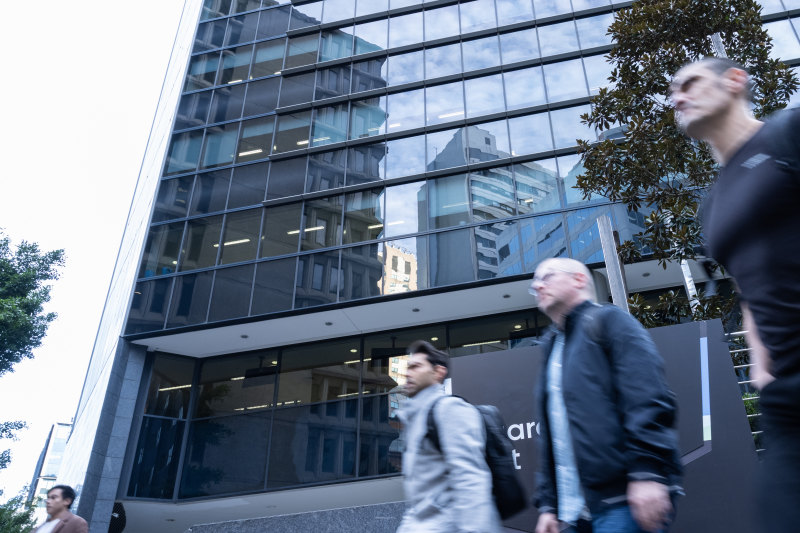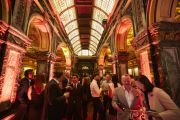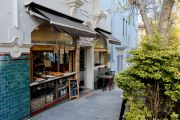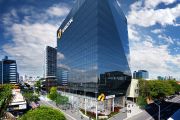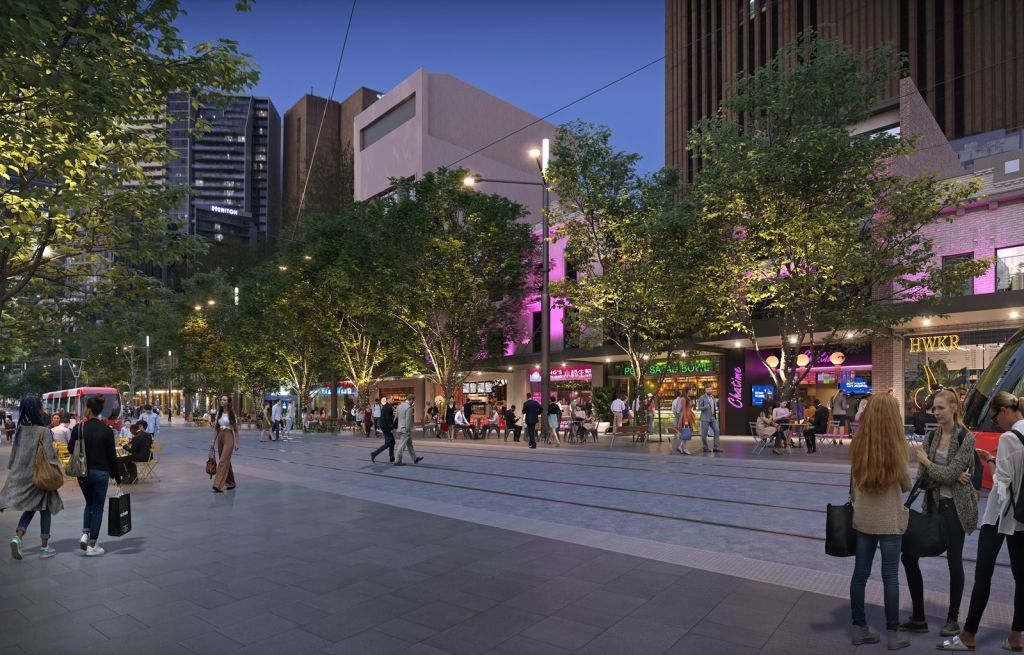
Australia's first high street comes back to life in Sydney's 'central social district'
In a sense, extending George Street’s permanent pedestrian zone all the way from Circular Quay to Railway Square brings Australia’s original High Street full circle.
Just seven horses landed with the First Fleet, so the country’s first official thoroughfare – that ran from The Rocks and was known as High Street before it was named for King George III – was, of necessity, tackled on foot.
The City of Sydney has now started a new stage of the project, paving, planting trees and furnishing another 9000 square metres in the blocks south of Town Hall. This stage will add another traffic-free kilometre along both sides of George Street’s light rail corridor.
The council has long boasted of being in the process of making one of the world’s greatest pedestrian boulevards. In these tentative post-COVID times, an attractive, walkable central city artery has assumed even greater significance as another lure to get people – and their enlivening energy – back onto the streets of the CBD.
Although during summer’s lunch hours the lower reaches of already pedestrianised George Street displayed a promising busyness, surveys of workers revealed that, by late February, only 50 per cent of commuting workers had their feet under their old CBD desks.
Gabriel Metcalf, chief executive officer of the Committee for Sydney, which has been very enthusiastic about the so-far completed “new George Street”, said the project was “succeeding beyond what anyone hoped for”.
Indeed, he sees this “incredible addition” as one of the aspects essential to recalibrating what was a central business district into a more sophisticated “central social district”.
“That’s a term coined about 20 years ago,” Mr Metcalf said. It framed the idea of how “it’s best to think about downtown not only as a central business district but as a central social place”.
“In the great cities, CBDs continue to play a role as places of work but are also places people come to play and live,” he said.
“They bring together office workers with residents, tourists and people going to bars, restaurants and museums.”
To keep the most heavily built-up areas of capital cities vibrant these days, Mr Metcalf said, “You need layers of people who benefit from centrality.
“So, we need to make them into places where people choose to go, because the professionals have more choices now as to where they work”.
Talking as he strolled weekday George Street near Martin Place, Metcalf commented: “All the signs are good that the CBD is not going to be abandoned and that it is coming back to life.
“And it’s very simple why it will succeed. It is filled with pedestrians.”
With more than 90 per cent of the daily through-Sydney commuter trips being undertaken on foot, opening up this walkable corridor – which incorporates the retail sector and, when finished to Railway Square by 2022, will link to Chinatown and the cinema zone – was always going to be a winner.
Lord Mayor Clover Moore saw the reclaimed George Street as a boon, saying, “As a place to enjoy public life in the city, George Street is becoming a magical place.”
Adding a beautifying tree canopy – another 100 trees will go into the Bathurst to Goulburn Street sector currently being paved in granite – and creating more seating spots in the form of new street furniture makes this boulevard traversing Sydney’s “civic spine” a place to sit, stare at passing crowds or your phone, casually socialise or window shop without feeling harried or hurried.
Belinda Miles, who has worked in the Bathurst Street neighbourhood for many years, said the project had transformed George Street “from an extension of Parramatta Road, where you couldn’t hold a conversation for the sound of the trucks, into a place that feels more like a park. “I can go there now and hear the birds!”
Pedestrian zones are great for cities, Mr Metcalf said. “George Street is a good example of the effect they have. But full pedestrianisation of a city is not the answer”. Outside the George Street corridor “wider footpaths (on streets) that will still allow for cars is the answer”.
Meanwhile, the new George Street is a miraculously timely addition to the fast-rebounding city. “Wonderful,” he said. “Wonderful.”
Get a weekly roundup of the latest news from Commercial Real Estate, delivered straight to your inbox!

